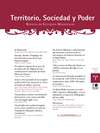Abstract
Resumen: En este artículo se analizan las referencias que sitúan los enterramientos de los reyes Chindasvinto, Recesvinto y Wamba en las localidades de Hornija, Bamba y Pampliega, respectivamente. Para ello se ha realizado un estudio de las fuentes que recogen estas noticias y su fiabiliadad, situándolas además en el contexto funerario de la Antigüedad tardía y la temprana Edad Media. Se ha concluido que estas informaciones pueden ser ciertas, pues manifiestan la continuidad de comportamientos practicados por los grandes latifundistas romanos, también en Hispania, que frecuentemente disponían sus enterramientos en mausoleos o recintos funerarios primero, y en pequeños oratorios cristianos más adelante. Para terminar, esta distribución contribuye igualmente a otorgar credibilidad a las noticias, tardías, que sitúan las sepulturas de los reyes asturianos anteriores a Alfonso II en sus centros de dominio territorial.
Palabras clave: reyes visigodos, enterramientos, Chindasvinto, Recesvinto, Wamba
Abstract:Several reports tell about the burial sites of Visigoth kings Chindasuinth, Reccesuinth and Wamba in, respectively, Hornija, Bamba and Pampliega. None of them is contemporary to the reported events and so the source remains untrustworthy. The oldest reference about Chindasuinth burial is from bishop Pelayo of Oviedo, who did his historical work in the xiith century and he is always suspicious of being a tricky author. In this instance, however, the depiction of the prelate is unusually sharp, to the point of suggesting a personal knowledge of a very relevant work. Ildephonsus of Toledo inform us about the death of Reccesuinth in Gerticos, but it is not until the ixth century, in the Adefonssi tertii chronica, when his burial site is indicated, in the very same place where he died, which was, following this source, his uillam propiam. Lastly, is Pelayo of Oviedo again the first chronicler who reports the bury of king Wamba in Pampliega. This paper tries to establish through several procedures how credible these burial sites are. First, by deeply checking the chronicles and their trustworthy. Then, we have examinated some funeral customs related to the late Antiquity and early Middle Ages trying to find out if the behaviour of these monarchs is in agreement with these methods. Under the Roman Empire, the landlords were frequently buried in their fundii, into burial enclosures generally associated to the uillae. In Hispania, these methods are recorded since the ist century, becoming frequent from the ivth and vth centuries on. Although the Visigoth customs in this territory —defectively reported by the archaeology— remain rather unknown, we can imagine that in some instances, the newcomers took the previous rural settlements. The report of Reccesuinth’s burial, in uillam propiam, could fit these criteria and should help to give credibility to these regal graves placed on rural territories of strong Visigoth settlement. Finally, a historical panorama like the one depicted above should assist to explain the funerary choices of the Asturian kings prior to Alfonso II , which are later reported but also in agreement with their nucleus of territorial power.
Keywords: Visigothic kings, burials, Chindasuinth, Reccesuinth, Wamba
* Siglas utilizadas:
Aespa: Archivo Español de Arqueología
MGH: Monumenta Germaniae Historica
PL: Patrología Latina
BNE: Biblioteca Nacional de España
MSS: Manuscrito

